Get yourself up to date with these vaccines
Many of the vaccines here will have been given to you as a child, but it’s possible that one could have slipped through the net, or you may need a booster shot. You likely had 2 doses of the chickenpox vaccine at 12 months and 4 years old, but if you didn’t, get yourself up to date — a new variant (clade 9) has been detected in India. Diphtheria, tetanus, and pertussis are also present in the country. As a baby, you probably had three shots of the combined vaccine and three boosters as a child. If you didn’t, get 1 shot before heading to India and a booster dose every 10 years thereafter. Make sure you’re fully vaccinated against measles, mumps, rubella (MMR) and polio, too. The MMR vaccine should have been given to you in 2 shots — at 12 months and 4 years old. And the polio vaccine comes in four doses — usually given at two months, four months, six months, and four years old.
The CDC also recommends that everyone over 6 months get the flu vaccine yearly, and those over 50, or those with a weakened immune system, should have the shingles vaccine. You must be protected against both illnesses in India — more than 1 million cases of shingles are recorded here yearly, and the country’s peak flu season coincides with what’s considered the best time to visit India — October to May.
These additional jabs are also recommended

Traveling to exotic, new places is one of life’s ultimate pleasures, but it brings with it the risk of new diseases. First up is cholera — thought to be present in India and spread through dirty water or contaminated food. The vaccine is given as a drink in two doses, each taken a week apart. Japanese encephalitis is next — this rare but dangerous infection is spread by mosquitoes, with outbreaks in India typically occurring during the rainy season — from May to October. If you’re traveling during this time, especially if you’ll be staying in rural areas, consider this two-dose vaccine for peace of mind.
You should also protect yourself from typhoid fever, especially if you plan to stay with friends or relatives. It’s spread through unclean water and food and is especially prevalent in rural parts of the country. Two types of vaccine are available for typhoid — one in pill form (four pills taken every other day) or a shot vaccine. Both should be given at least two weeks before traveling.
Ensure your doses of Hepatitis A and B are up to date, too. Each is spread in similar ways, whether that’s contaminated food or drink, having sex with an infected person, or sharing needles with one. Both vaccines are routine and given to children in the U.S., but as an adult traveling to India, you should get the combined vaccine as a booster shot to make sure you’re still protected.
Keep away from all animals
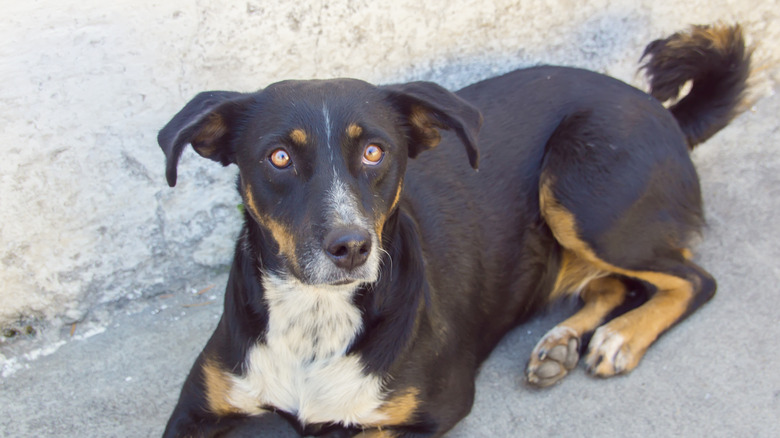
Kryssia Campos/Getty Images
Do you love to pet every dog, stroke every cat, and take pictures of every monkey you see? Well, this isn’t advised in India. In fact, it will increase your risk of contracting certain diseases. Animal bites and wounds can play host to a whole load of these — cellulitis and fasciitis are just some examples common in India, with both almost always requiring strong antibiotics for treatment.
What’s more, India has the highest number of reported cases of rabies in the world — a rare but serious infection that’s usually fatal once symptoms appear. Rabid dogs are often the problem here, but you can get rabies from any infected animal if it bites you, scratches you, or licks a wound on your body. It all sounds terrifying, but there are easy ways to stay safe.
First, steer clear of all animals, including those cute-looking monkeys at temples. Second, get the pre-exposure vaccine before traveling — this is two doses (one given seven days after the other), and a third dose is needed within three years if you continue to visit high-risk areas. It’ll protect you from a rabies infection for a little while (if you’ve been exposed to the virus), giving you time to reach a hospital in India for the two-dose post-exposure vaccine. Depending on where you are in the country, this may be difficult to come by. So, having a medical evacuation insurance policy covering emergency travel to receive it can give you peace of mind.
Consider your malaria risk
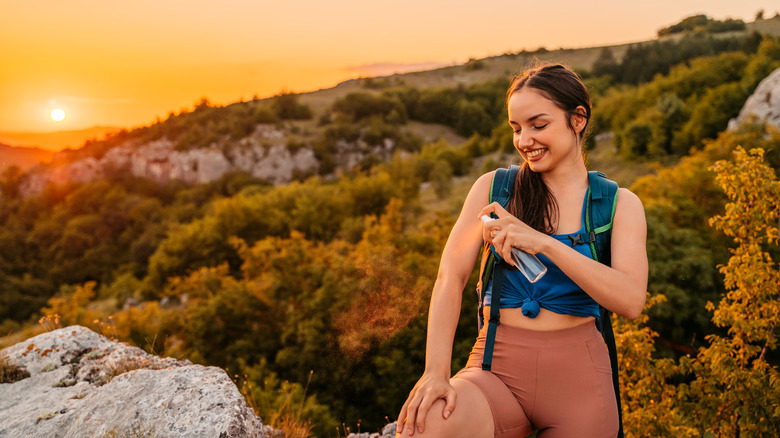
Urbazon/Getty Images
You’ve probably heard about malaria — a serious flu-like illness caused by a parasite that infects certain types of mosquitoes. Whether you’ll need extra special medication depends on where your adventures in India are taking you and when you plan to travel. Most regions are low-risk — malaria has been found in cities like Mumbai and Delhi. Still, most cases occur in West Bengal, Jharkhand, Chhattisgarh, Gujarat, Madhya Pradesh, and Odisha. There’s also a higher risk if you’re traveling to India during its monsoon season (June to September), when hot temperatures, heavy rains, and a risk of flooding bring more mosquitoes.
Make sure to have a strong insect repellent on hand, and wear long, loose-fitted clothing to avoid being bitten. But if you’re going to high-risk areas, get prescription antimalarials, too. Some of these tablets will need to be taken before your trip, during your travels, and after you get back — your doctor can help you determine which medication is best for you.
Another mosquito-borne illness to be aware of is Dengue — it’s become more common in India over recent years. The mosquitos that carry it are often found in urban areas, but there’s no vaccine. This means using a strong insect repellent, sleeping under a mosquito net, and covering your skin is your best defense. Dengue can cause nausea, vomiting, headache, and joint and muscle pain, but not everyone infected will feel sick.
Prepare for diarrhea

Gpointstudio/Getty Images
One key symptom across many of the illnesses we’ve spoken about already is (the dreaded) diarrhea. While you can “get the runs” from anywhere in the world, “Delhi belly” is fairly common for visitors to India. From a 24-hour bout of loose stools to a full-on episode of travelers’ diarrhea (TD) or giardiasis, the risk is exceptionally high here. You have a 60% chance of getting TD during a two-week trip. It’s usually caused by eating or drinking contaminated foods or liquids, so it pays to be vigilant at all times.
Washing your hands as often as possible or using an antibacterial gel (when running water isn’t available) can help protect you from germs. But you’ll also want to avoid drinking tap water (even when brushing your teeth) and always ask for drinks without ice when you’re out and about. Stick to filtered, boiled, or bottled water wherever you can. Oh, and when it comes to eating at restaurants or from food stalls in India, say no to anything that’s been reheated, not to mention seafood and meat, which can also pose real risks if they’re not fresh. Steering clear of raw, unpeeled fruit and veg is a good idea, too. If you’re concerned about getting diarrhea while you’re away, bring along some anti-diarrhea medication and oral rehydration salts, which can help relieve symptoms and give you peace of mind.
Protect yourself from COVID-19
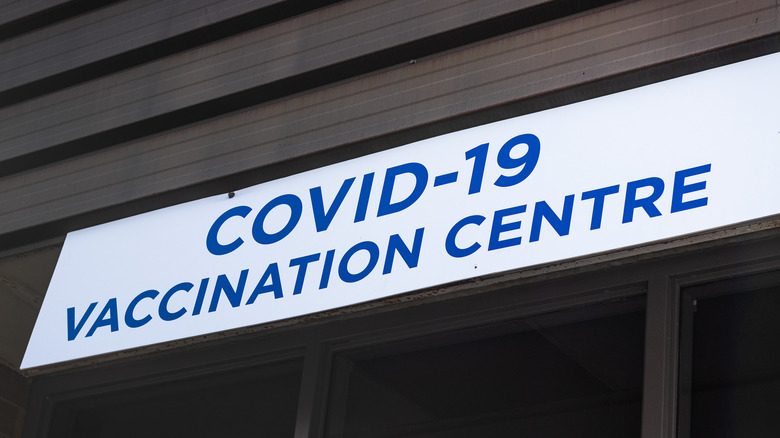
Margarita-young/Getty Images
Sorry — it’s likely you’re a bit fed up hearing about this virus and the three-year-long global emergency it caused. Nevertheless, it’s another jab you should consider getting before you make your way to India. True, there are no COVID-19 testing requirements to enter the country — you don’t even need to prove you’re vaccinated — but it’s a good idea to make sure you’re covered should you become infected while you’re out there. Why? India is so densely populated.
Despite being one-third the size of the U.S., it has four times the population, which increases the likelihood of virus transmission. Daily cases in the country are indeed low at this time. Still, the virus appears to circulate during specific seasons — India’s last spike saw a total of 12,193 people infected with COVID-19 on April 21, 2023. With all this in mind, it’s better to be safe than sorry, so do your part to stay protected from the illness. The CDC recommends everyone over the age of 5 get one dose of an updated COVID-19 vaccine yearly, especially those traveling internationally.
Air quality is a huge problem
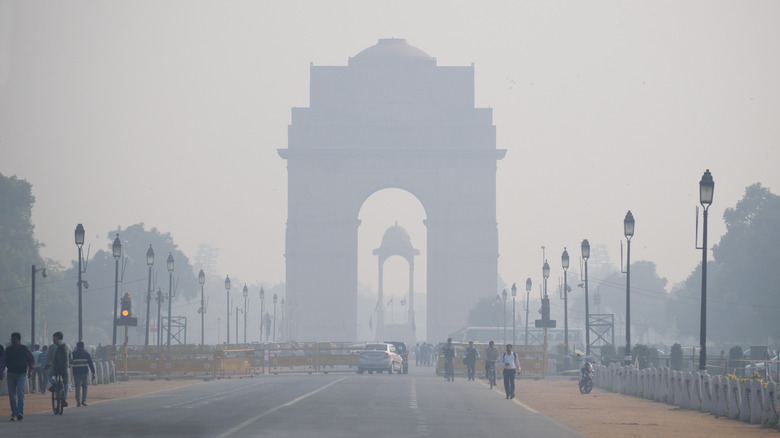
Saurav Purkayastha/Getty Images
With its sumptuous mix of traditions, stunning architecture, and jaw-dropping landscapes, India is a real sight to behold. But if you’re planning a trip here, you’ll want to think carefully about the time of year you visit. Perhaps more so than any other country in the world, India has an air quality problem, thanks to many of its mega-cities with dangerous pollution levels, especially during the annual “pollution season” — from October to December.
If you need any more convincing, the air quality index in Delhi hit 500 in November 2023. For context, this is the highest measurement the index will go to and is 100 times the limit deemed healthy by the World Health Organisation (WHO). Thick smog covering the capital, brought on by car emissions, construction, and farmers burning their fields during the crop planting season, has forced schools to shut and all but non-essential construction work to be paused in the past. Avoiding India’s urban areas may help, but beware that air quality is a real problem in rural settings, too.
To properly take in the sights and smells of this wondrous country, you’re much better off timing your trip outside of the pollution season. But if you must travel at this time, take plenty of precautions. You’ll want to bring multiple face masks and avoid going outside wherever possible, especially if you have a preexisting health condition like asthma or chronic lung disease.
Beware of altitude sickness
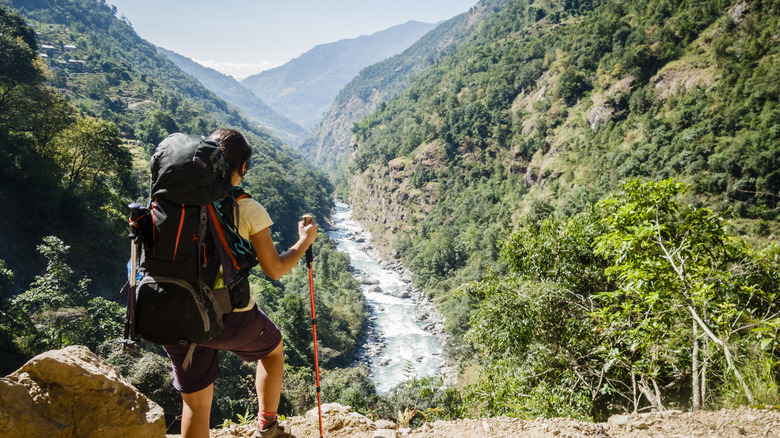
Jordiramisa/Getty Images
Frankly, India is ginormous — you’d need years, perhaps decades, to explore every ounce of its captivating land mass. For this reason, some travelers choose to visit the country in sections, organizing trips to and from India over the course of many years. But if this holiday sees you planning to take in all that the north has to offer — a word of caution. The high-elevation Himalayan areas that are both stunningly beautiful and have a perfect climate during India’s summertime can also bring on the symptoms of altitude sickness. We’re talking about places like the home of the 14th Dalai Lama — Dharamshala, mountainous Manali, the hill resort of Shimla, and spiritual Rishikesh.
But what exactly is altitude sickness? It’s when your body doesn’t have time to adjust to lower oxygen levels in the atmosphere. You’re looking for the tell-tale signs of a headache, nausea and vomiting, a loss of appetite, fatigue (even when resting), trouble sleeping, and dizziness. To fight altitude sickness, make sure you ascend gradually and give yourself time to acclimate to your surroundings. If your symptoms worsen, especially at rest, you should descend slowly. Planning on taking a hiking or trekking excursion in the Himalayas? Your doctor can advise you on how to physically prepare for trips to high altitudes, including using a preventative altitude sickness treatment, such as acetazolamide. But if you notice troublesome symptoms on this medication, follow the safety guidance above.
Protect yourself from the sun
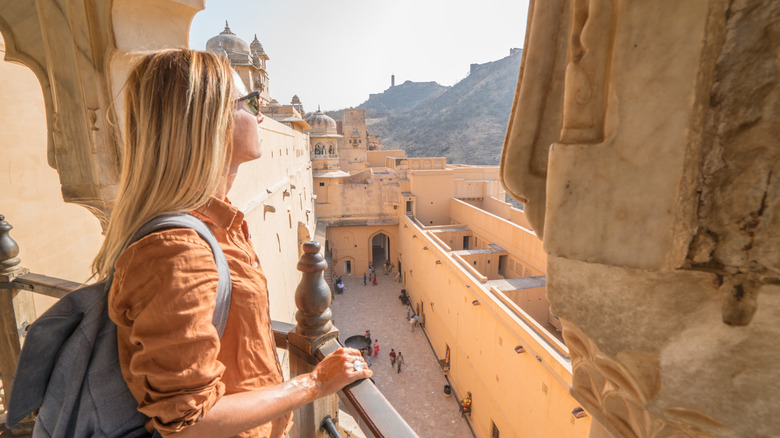
Swissmediavision/Getty Images
Regardless of the time of year, you’re visiting India, you need to be careful when it comes to sun exposure. In Mumbai, for example, the UV Index (UVI) has been recorded as 8.2, which falls under the high-risk category — meaning you should avoid direct sunlight wherever possible, especially in the middle of the day. This is particularly important during the summer months (March to May) and where elevation is high, such as in the Himalayan areas in the north.
Other ways to stay as safe as possible are using a high-SPF sunscreen and reapplying it every two hours to protect yourself from sunburn. Wear loose, lightweight clothing and a sun hat to ward off heat-related illnesses like heat stroke. Steering clear of any physical activity when temperatures are high is also advised. So, too, is drinking plenty of water often and eating small, regular meals throughout the day.
Be aware of sexually transmitted infections (STIs)
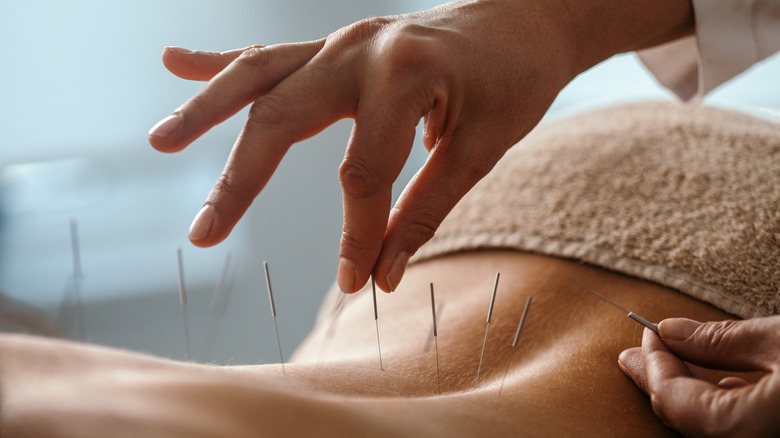
Miljko/Getty Images
Arming yourself with protection against STIs is always a good idea, whether you’re exploring new sights abroad or going about your normal routine at home. But make sure you stay extra vigilant during your trip to India — especially if you’re a member of a high-risk population group, such as someone who’s transgender, a man who has sex with men, or a female sex worker. Why? In 2019, it was found that 2.3 million people in India were living with HIV, especially in areas such as Manipur, Mizoram, and Nagaland. Compare this with 1.2 million people living with HIV in the U.S.
None of this is anything to worry about, though — you just need to be sensible and follow all the same general advice as you would at home. First off — don’t have unprotected sex. If you do choose to have sex while in India, make sure you use latex condoms correctly. Second, don’t share any needles, including needles used for getting a new tattoo, a piercing, or health therapies like acupuncture. Lastly, don’t inject drugs. HIV can be spread through each of these means via bodily fluids, such as saliva, blood, and semen. Not to mention other STIs that can be contracted in similar ways, including chlamydia, gonorrhea, and syphilis.
Get pre-travel advice, even if visiting people you know
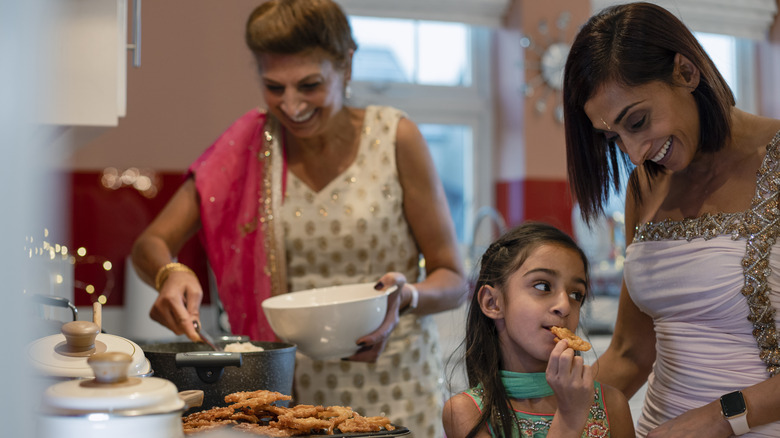
Solstock/Getty Images
Are you jetting off to India to visit relatives or old friends? Chances are you’re counting down the days until you’re reunited with your loved ones. But before you hop on a flight, make sure you’ve checked in with a doctor. While your trip to India may technically be a return to your homeland, it’s just as important for you to be made aware of the health risks at play, if not more so. For instance, you might be staying in a rural area not set up properly for tourists — somewhere that doesn’t have a hospital or medical facilities nearby. Or maybe you’ll be eating all of your meals with local family members who don’t have adequate running water or the same sanitation measures you’re used to when it comes to preparing food.
Even if you think it’s a waste of time, book an appointment with your doctor at least eight weeks before you travel anyway. It can give you peace of mind that you’re up to date with all the necessary vaccines, are aware of the risks you might be facing, and have all the right precautions in place should something go wrong.

